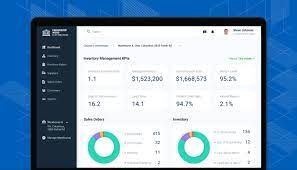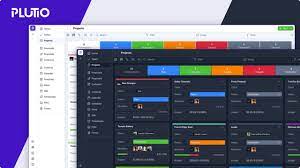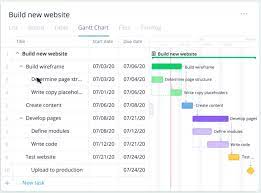Navigating Change: The Evolution of Change Management Software
The Power of Change Management Software
In today’s fast-paced business environment, change is inevitable. Organisations must adapt to new technologies, market trends, and internal processes to stay competitive. Managing change effectively is crucial for success, and this is where change management software plays a vital role.
What is Change Management Software?
Change management software is a tool that helps organisations plan, track, and implement changes in a structured manner. It provides a systematic approach to managing change by centralising information, automating workflows, and ensuring accountability throughout the process.
The Benefits of Change Management Software
- Improved Communication: Change management software facilitates communication between stakeholders, ensuring everyone is informed about upcoming changes and their impact.
- Efficient Planning: By creating detailed change plans and timelines, organisations can better anticipate potential challenges and allocate resources effectively.
- Risk Mitigation: Identifying and addressing risks early on helps minimise disruptions and ensures a smoother transition during the change process.
- Audit Trail: Change management software maintains a comprehensive audit trail of all changes made, providing transparency and accountability.
- Enhanced Collaboration: Team members can collaborate seamlessly on change initiatives, share feedback, and work towards common goals using the software’s collaborative features.
Choosing the Right Change Management Software
When selecting change management software for your organisation, consider factors such as scalability, customisation options, integration capabilities with existing systems, user-friendliness, and vendor support. It’s essential to choose a solution that aligns with your specific needs and organisational objectives.
In Conclusion
Change management software empowers organisations to navigate complex changes with confidence and efficiency. By implementing the right tools and strategies, businesses can adapt to evolving circumstances while minimising disruptions and maximising opportunities for growth.
6 Essential Tips for Optimising Change Management Software in Your Organisation
- Ensure the software is user-friendly to encourage adoption among employees.
- Customise the software to align with your organisation’s specific change management processes.
- Integrate the software with other relevant tools and systems for seamless workflow.
- Provide adequate training and support to employees using the software to maximise its effectiveness.
- Regularly update and maintain the software to ensure it meets evolving needs and remains efficient.
- Collect feedback from users to continuously improve the software and address any issues or concerns.
Ensure the software is user-friendly to encourage adoption among employees.
To maximise the effectiveness of change management software within an organisation, it is crucial to ensure that the software is user-friendly. User-friendly software promotes ease of use and encourages adoption among employees at all levels. When employees find the software intuitive and easy to navigate, they are more likely to embrace it as a valuable tool in managing change initiatives. By prioritising user-friendliness in the selection of change management software, organisations can enhance employee engagement, streamline processes, and ultimately drive successful change implementation across the board.
Customise the software to align with your organisation’s specific change management processes.
Customising change management software to align with your organisation’s specific change management processes is crucial for ensuring a seamless and efficient transition. By tailoring the software to match your unique workflows, terminology, and approval processes, you can enhance user adoption, streamline communication, and improve overall efficiency. This customisation allows you to integrate the software seamlessly into your existing systems and ensures that it meets the specific needs and requirements of your organisation, ultimately maximising the effectiveness of your change management initiatives.
Integrate the software with other relevant tools and systems for seamless workflow.
To maximise the effectiveness of change management software, it is essential to integrate it with other relevant tools and systems. By seamlessly connecting the software with existing platforms, organisations can streamline workflows, enhance communication between teams, and ensure data consistency across different applications. Integration enables a cohesive approach to change management, allowing for better collaboration, improved efficiency, and a more holistic view of the change process. This interconnected ecosystem of tools facilitates a smooth transition during periods of change and helps organisations adapt quickly to new challenges and opportunities.
Provide adequate training and support to employees using the software to maximise its effectiveness.
To maximise the effectiveness of change management software, it is essential to provide adequate training and support to employees who will be using the tool. By offering comprehensive training sessions and ongoing support, organisations can ensure that employees are equipped with the necessary skills and knowledge to leverage the software effectively. This investment in training not only enhances user adoption but also increases overall efficiency and success in managing change initiatives. Supportive resources and guidance empower employees to utilise the software optimally, leading to smoother transitions and successful implementation of change within the organisation.
Regularly update and maintain the software to ensure it meets evolving needs and remains efficient.
Regularly updating and maintaining change management software is essential to keep pace with evolving needs and maintain optimal efficiency. By staying current with software updates, organisations can benefit from new features, enhanced security measures, and improved performance. Additionally, ongoing maintenance helps address any issues promptly, preventing potential disruptions in change processes. Ensuring that the software is up-to-date and well-maintained enables organisations to adapt to changing requirements effectively and maximise the value derived from their investment in change management technology.
Collect feedback from users to continuously improve the software and address any issues or concerns.
To enhance the effectiveness of change management software, it is essential to collect feedback from users regularly. By soliciting input from those directly involved in using the software, organisations can gain valuable insights into its functionality, usability, and areas for improvement. This feedback loop allows for continuous refinement of the software, addressing any issues or concerns raised by users and ensuring that it aligns with their needs and expectations. Ultimately, incorporating user feedback into the development process leads to a more robust and user-friendly change management software solution that drives successful change initiatives within the organisation.






